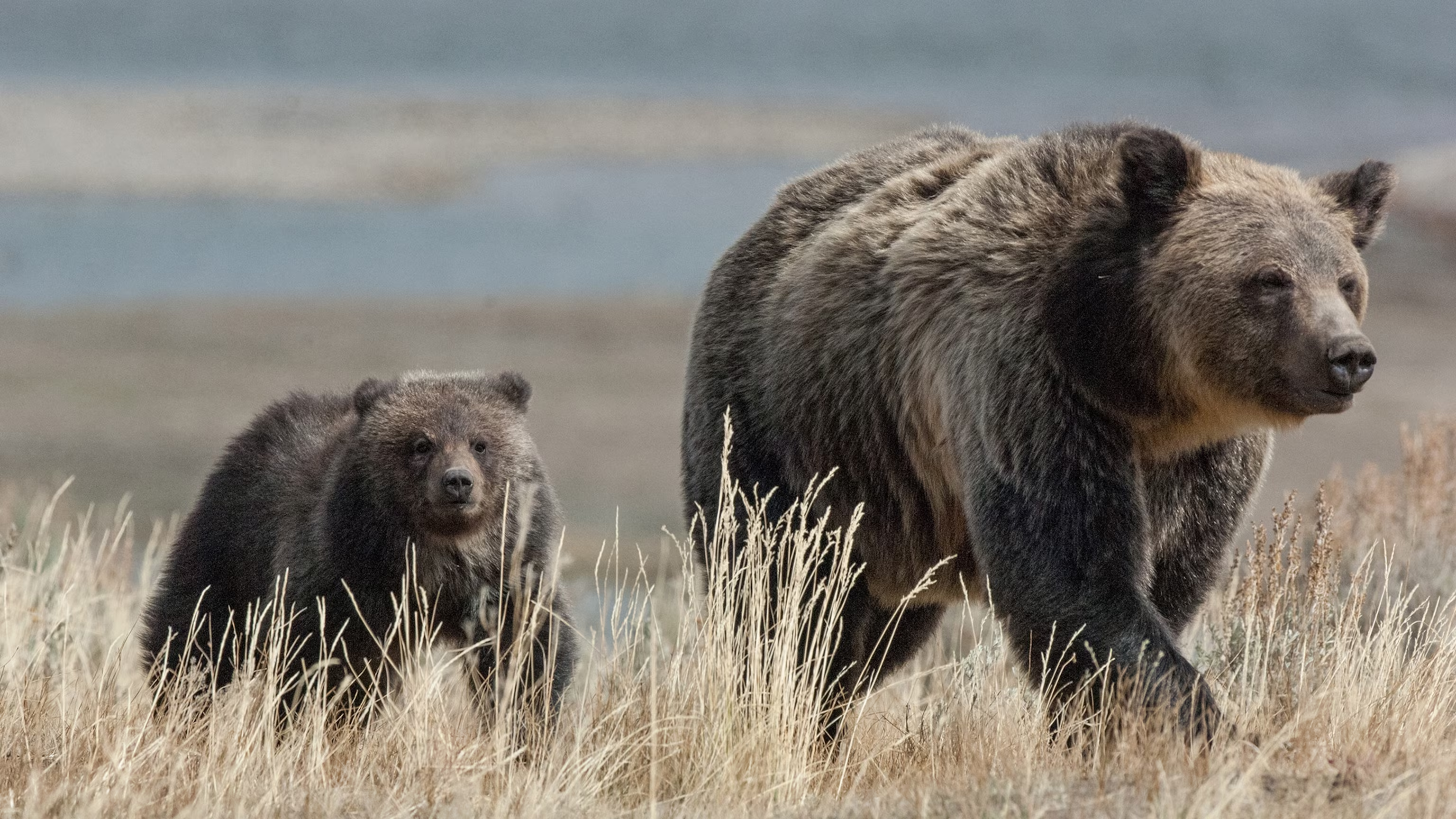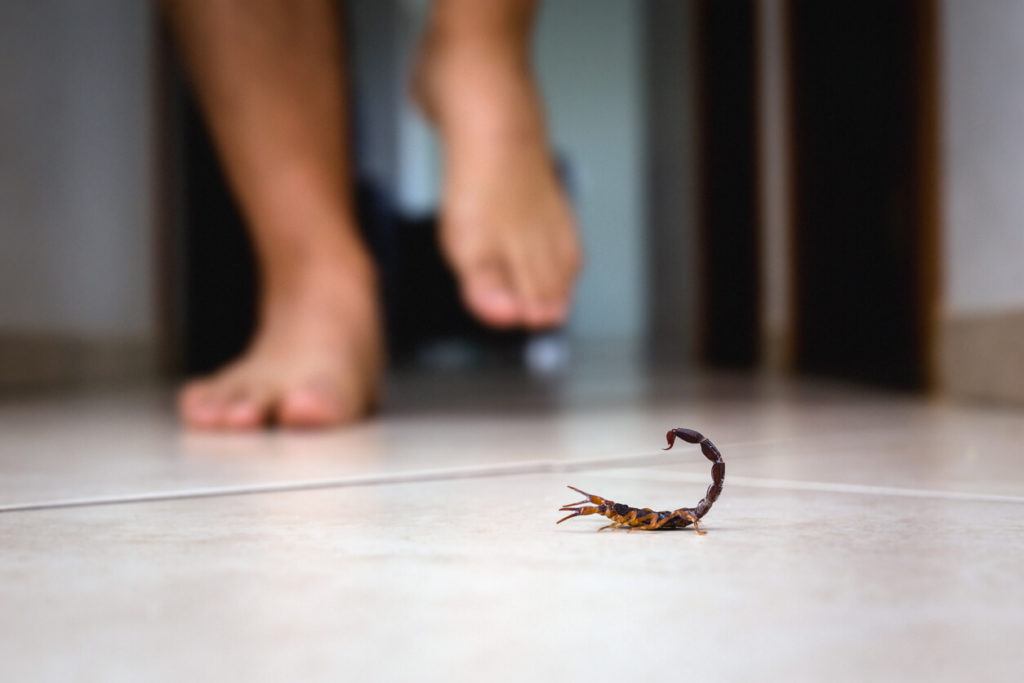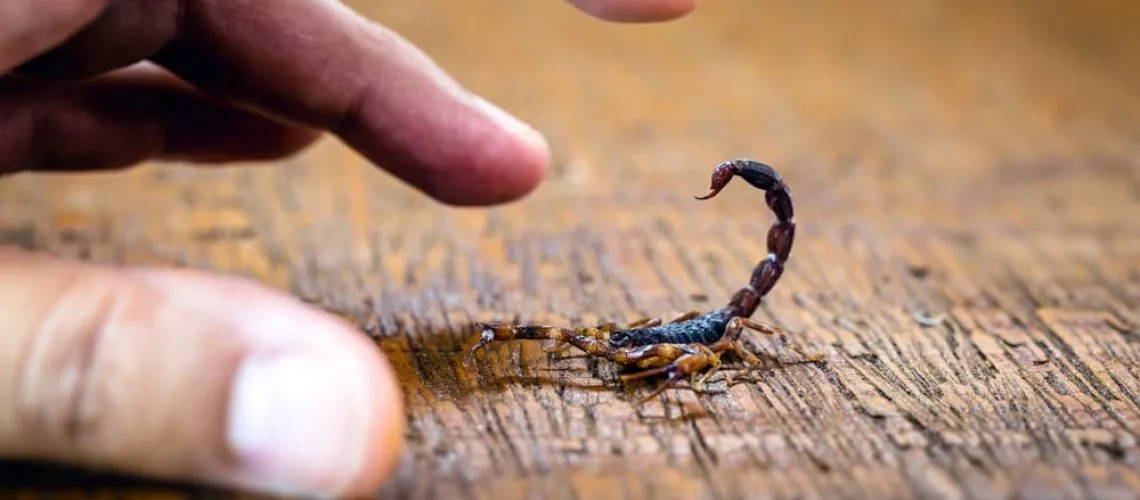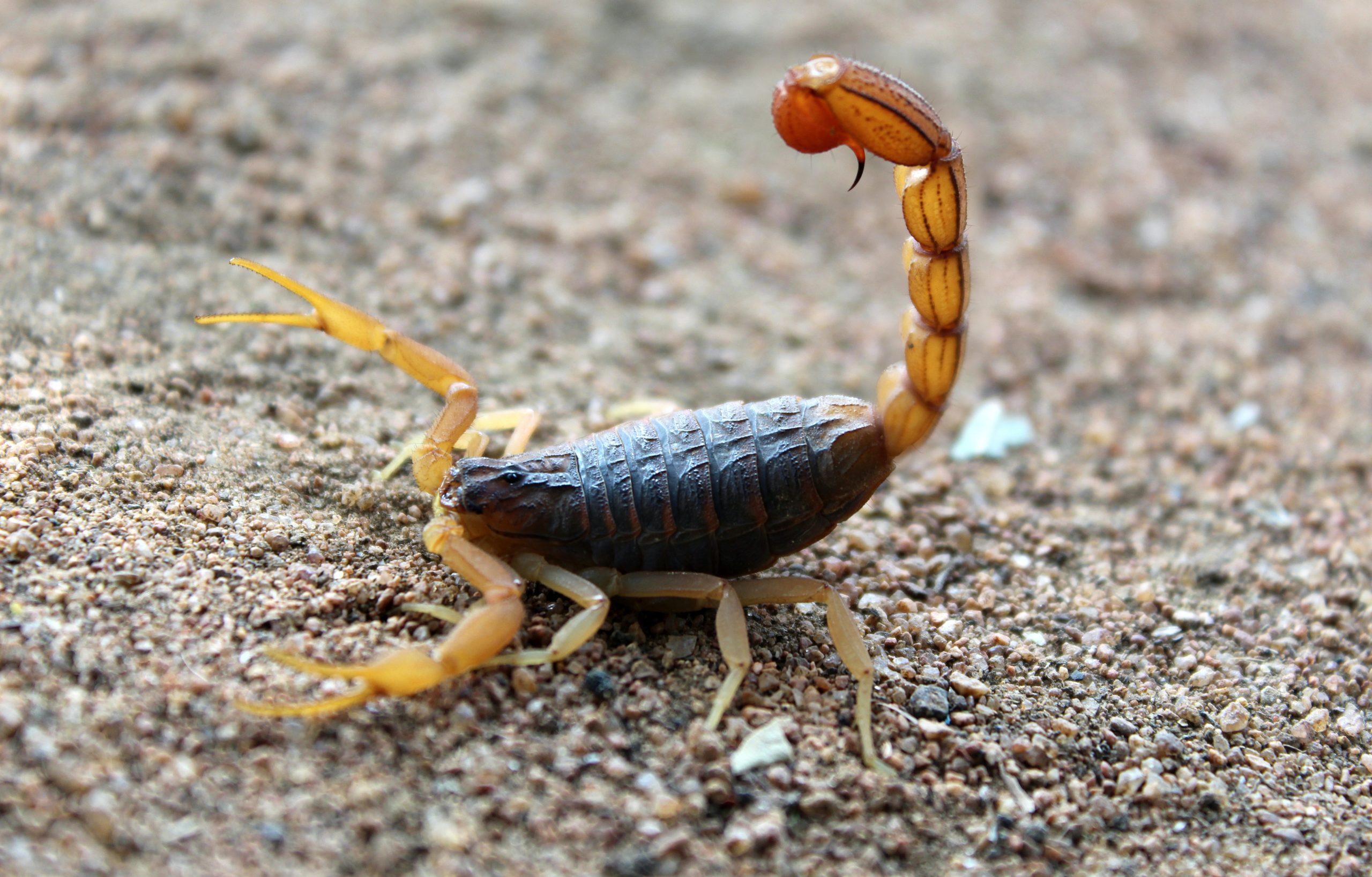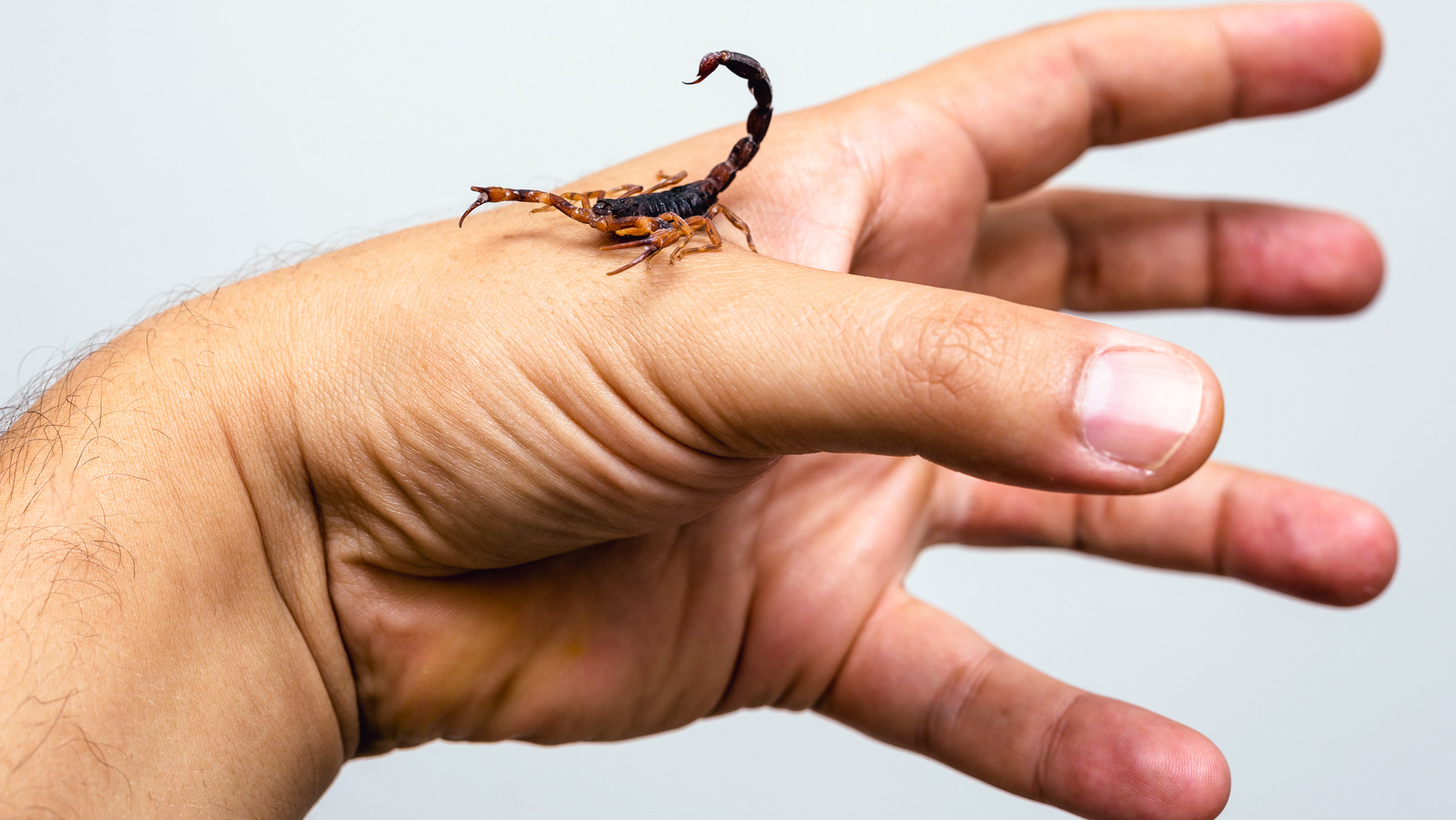Travel Safety | Dangerous Animals | Scorpion Stings
Protect yourself from scorpion stings and dangerous animals during your travels. Discover expert tips to stay safe and enjoy your adventures worry-free.
Author:Maya ReyesReviewer:Sophia HarperFeb 18, 202516.2K Shares250.6K Views
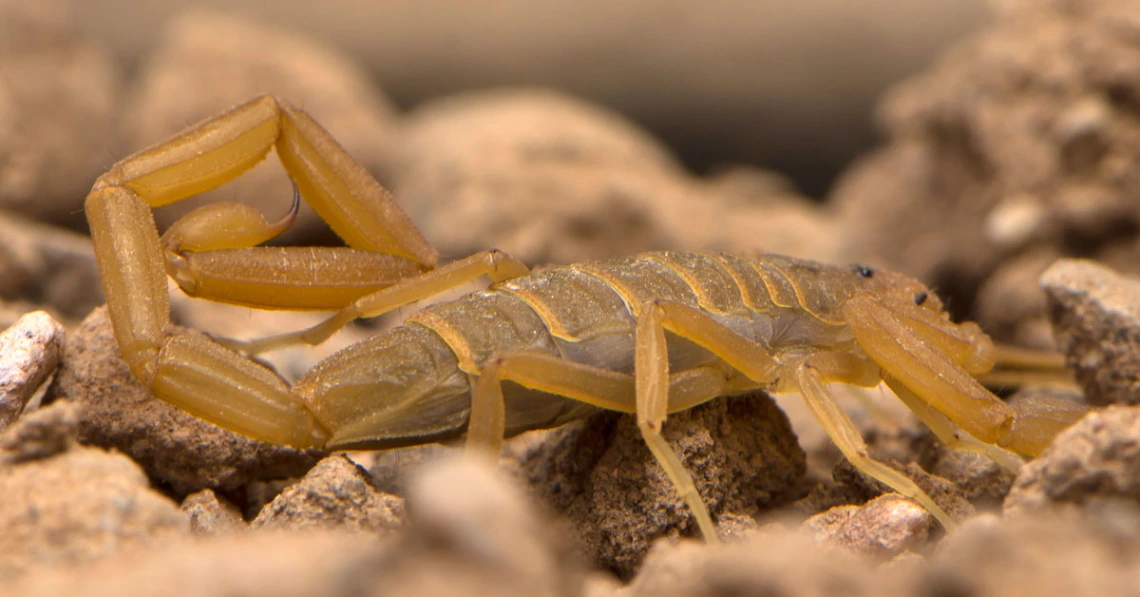
Traveling opens the door to exploring new cultures, landscapes, and adventures. However, for those venturing into remote or exotic areas, it's crucial to consider the risks that come with unfamiliar environments especially the dangers posed by wildlife.
While the thought of encountering dangerous animalsmay seem like something out of a thriller movie, the reality is that travelers can find themselves in situations where they must protect themselves from potential harm.
1. Understanding Travel Safety And Dangerous Animals
When traveling to areas known for their wildlife, safety should always be a top priority. While some animals are easily recognizable, others may be more elusive or blend into their environment.
Traveling to remote regions or unfamiliar terrains increases the likelihood of encountering wildlife, including snakes, crocodiles, and venomous insects like scorpions. However, with proper precautions, many of these risks can be mitigated.
- Venomous Snakes: Species like cobras, vipers, and the black mamba can deliver deadly bites if provoked.
- Large Predators: In areas like Africa or parts of Asia, encounters with lions, tigers, and crocodiles can pose significant dangers, especially if safety protocols are ignored.
- Insects & Arachnids: Alongside scorpions, there are other dangerous insects like mosquitoes (which can spread malaria and dengue) and spiders (some species can deliver life-threatening bites).
By understanding the specific animals in the area you're visiting, travelers can take the necessary steps to avoid dangerous encounters and handle any risks that arise.
2. What Are Scorpion Stings?
Scorpions are eight-legged arachnids found in warm, dry regions globally, with the majority of them residing in the southern and southwestern parts of the United States. These creatures possess a pair of front claws and a flexible tail, which ends in a stinger that contains venom.
This venom is used by scorpions as a defense mechanism when they feel threatened. Although people often refer to a scorpion's defensive action as a "bite," it is actually a sting.
While most scorpion stings are not dangerous, they typically cause pain but are not harmful. Less than 5% of stings require medical attention.
Out of the approximately 1,500 scorpion species worldwide, only about 30 are capable of delivering venomous stings that can be life-threatening. Fortunately, the majority of scorpions found in the U.S. are not harmful.
3. What Does A Scorpion Sting Look Like?
A scorpion sting typically causes redness and mild swelling on the skin. Most stings are not harmful, usually resulting in pain at the sting site along with a mild tingling or burning sensation.
However, more dangerous stings can pose a serious threat to life. The most hazardous scorpion in the U.S. is the bark scorpion, primarily found in Arizona, but also in parts of California, Nevada, New Mexico, Texas, and Utah.
A sting from this species can lead to more severe reactions. Seek immediate medical attention if you or someone else experiences any of the following symptoms after a scorpion sting:
- Numbness throughout the body
- Difficulty breathing or swallowing
- Swelling of the tongue, excessive drooling, or thick saliva
- Slurred speech
- Restlessness or confusion
- Seizures
- Abnormal eye movements
- Muscle twitching (myoclonus)
- Irregular heartbeat or arrhythmia
- High blood pressure
- Abdominal pain
4. Scorpion Stings: The Hidden Danger
Scorpions, though small, are among the most dangerous animals for travelers in certain parts of the world, particularly in desert and semi-arid regions.
While the majority of scorpions are not deadly, some species carry venom strong enough to cause severe reactions, especially in vulnerable populations like children or the elderly.
The fat-tailed scorpion (Androctonus australis) is one of the most dangerous, primarily found in parts of the Middle East, North Africa, and Asia. Its sting can cause intense pain, respiratory distress, and even death in extreme cases if medical attention isn't provided quickly.
Other dangerous species include the Arizona bark scorpion, native to the southwestern United States.
Risk Factors:
- Location: Scorpions are most commonly found in arid environments such as deserts, caves, and rocky terrain.
- Time of Year: While scorpions are active year-round in some regions, they tend to be more active during the warmer months when they seek shelter from the heat.
- Human Activity: Scorpions may enter buildings, hotels, or homes in search of food or shelter, increasing the risk of stings, especially in rural or underdeveloped areas.
5. What Are The Possible Complications Of A Scorpion Sting?
The venom from a scorpion sting can result in pain, or in rare cases, affect the nervous system and lead to serious health complications. These can include issues with the heart, breathing, and muscles. It's crucial to seek prompt medical attention if you experience severe symptoms after being stung.
Scorpion stings tend to be more hazardous for children than adults, as the venom has a more pronounced effect on a child's smaller body.
6. Identifying Scorpions: How To Stay Safe
Recognizing a dangerous scorpion is crucial to staying safe. While there are thousands of species of scorpions around the world, most are harmless. However, identifying the more dangerous species and understanding their habits can significantly reduce the risk of encountering one.
Common Scorpion Species To Identify:
- Fat-Tailed Scorpion (Androctonus australis): Characterized by its stocky body and thick tail, this species is highly venomous.
- Arizona Bark Scorpion (Centruroides sculpturatus): Small but venomous, this species can be identified by its slender body and pale color.
- Emperor Scorpion (Pandinus imperator): Larger and less venomous, the emperor scorpion is not a major threat, though it can still deliver a painful sting.
Tips For Avoidance:
- Check Your Accommodations: Always inspect your sleeping area before resting. Scorpions tend to hide in dark, warm places such as shoes, bedsheets, and behind furniture.
- Wear Protective Clothing: When trekking in areas with scorpion populations, wear thick boots and gloves to avoid accidental stings.
- Be Cautious at Night: Scorpions are nocturnal and active at night. Avoid walking barefoot in unfamiliar areas after dark.
7. How Long Do Scorpion Sting Symptoms Last?
In most cases, symptoms from scorpion stings resolve on their own within 48 hours. However, the effects of more severe stings may continue to progress for up to 24 hours. Healthcare providers will monitor you during this time to manage symptoms and ensure no new ones emerge.
According to the Cleveland Clinic, while most scorpion stings in the U.S. are painful but not dangerous, it's important to take the right steps. Clean the sting site and apply ice to reduce pain and swelling. If you're unsure about the type of scorpion or your symptoms, contact your local poison control center.
If you experience signs of an allergic reaction, seek immediate medical helpby calling 911 or going to the nearest emergency room. Although rare, a bark scorpion sting can be fatal if left untreated.
8. What To Do If Stung By A Scorpion
If you're stung by a scorpion, staying calm and following first-aid procedures is critical. Here are the essential steps to take:
Immediate First Aid:
- Clean the Sting Area: Wash the sting site with soap and water to reduce the risk of infection.
- Apply a Cold Compress: To alleviate pain and swelling, apply a cold compress or ice wrapped in a cloth to the sting site.
- Elevate the Affected Limb: If the sting is on an arm or leg, keep it elevated to help reduce swelling.
- Pain Relief: Over-the-counter pain relievers like ibuprofen or acetaminophen can help alleviate mild pain.
When To Seek Medical Help:
Seek medical assistance immediately if:
- The person stung is a young child, elderly, or has a weakened immune system.
- There are symptoms like difficulty breathing, swelling of the face or throat, or convulsions.
- The sting site shows signs of infection (increased redness, warmth, or pus).
YouTube Video
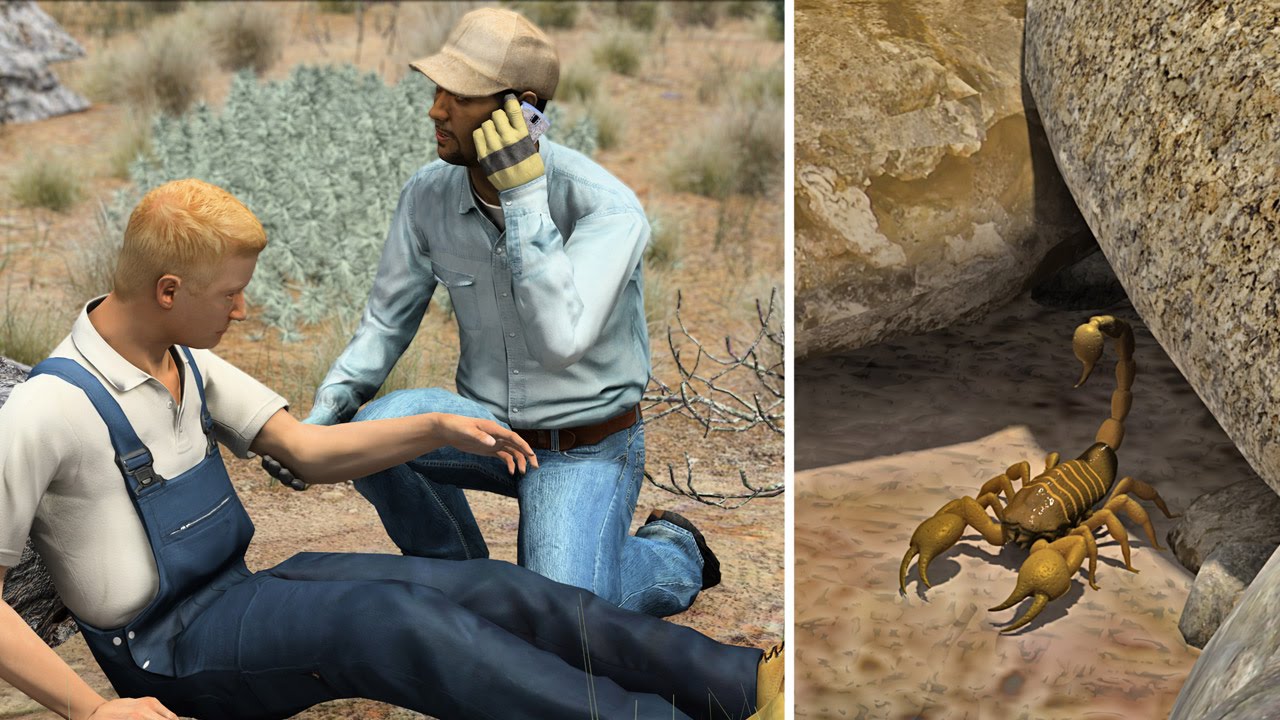
First Aid - Scorpion Stings Training
9. Can You Die From A Scorpion Sting?
Scorpion stings can be life-threatening, particularly for children aged 6 and younger. However, the majority of scorpions in North America are not venomous, and fatalities from stings are extremely rare. In fact, there have been no reported deaths from scorpion stings in the United States in over 50 years.
10. Prevention And Safety Measures
Prevention is always better than cure. Here’s how to minimize your risk of encountering dangerous animals and suffering from a scorpion sting:
Before Traveling:
- Research Local Wildlife: Understand the animals that pose a threat in the region you're visiting, and take note of where they are most commonly found.
- Vaccinations: Ensure your vaccinations are up-to-date, and consider getting a tetanus shot if you're heading to a region with many potential wildlife-related injuries.
During Your Trip:
- Stay in Secure Accommodations: Choose hotels with sealed rooms to prevent animals from entering.
- Wear Protective Gear: When hiking, wear long sleeves, boots, and gloves to protect against scorpions and other wildlife.
- Be Mindful of Your Surroundings: Avoid walking in tall grass, and always watch where you step, especially at night.
Travel Insurance:
Ensure your travelinsurance covers wildlife-related injuries, including medical treatment for venomous stings, snake bites, or animal attacks.
You Might Like: Mouth-Watering Pakistani Desserts You Need To Try
FAQs About Travel Safety, Dangerous Animals, And Scorpion Stings
What Are The Symptoms Of A Scorpion Sting?
Symptoms can range from mild to severe. Common signs include sharp pain, redness, and swelling at the sting site. More severe reactions may include breathing difficulties, blurred vision, and muscle spasms.
How Can I Protect Myself From Dangerous Animals While Traveling?
Avoid risky areas, wear protective clothing, stay vigilant in wildlife-heavy zones, and follow local safety advice for wildlife encounters.
Are Scorpions Common In All Desert Regions?
Not all deserts have scorpions, but arid areas like the southwestern United States, Middle Eastern deserts, and parts of Australia are known for having scorpion populations.
What Should I Do If I Encounter A Venomous Snake Or Scorpion While Hiking?
Stay calm and slowly back away. If you are bitten or stung, apply first aid immediately and seek medical attention as soon as possible.
What Types Of Insurance Cover Animal-related Injuries?
Comprehensive travel insurance typically covers emergency medical care and evacuation in case of injury from dangerous animals.
Conclusion
Traveling safely in areas with dangerous animals requires awareness and preparation. By identifying potential risks, taking preventive measures, and knowing how to respond to a scorpion sting, you can minimize your chances of an unfortunate encounter.
Remember that knowledge is your best defense, and by staying informed, you can enjoy your travels with confidence.
Jump to
1. Understanding Travel Safety And Dangerous Animals
2. What Are Scorpion Stings?
3. What Does A Scorpion Sting Look Like?
4. Scorpion Stings: The Hidden Danger
5. What Are The Possible Complications Of A Scorpion Sting?
6. Identifying Scorpions: How To Stay Safe
7. How Long Do Scorpion Sting Symptoms Last?
8. What To Do If Stung By A Scorpion
9. Can You Die From A Scorpion Sting?
10. Prevention And Safety Measures
FAQs About Travel Safety, Dangerous Animals, And Scorpion Stings
Conclusion

Maya Reyes
Author
Maya Reyes’s wanderlust was sparked in the temples of Luang Prabang, where the scent of lemongrass and the chants of monks revealed the transformative power of travel.
Since then, her journey has been defined by cultural immersion and authentic connections. From learning batik in Indonesia to sharing meals with nomadic families in Mongolia, Maya seeks experiences that highlight the human stories behind each destination.
Travel for her is a way to weave her narrative into the world’s cultural tapestry, creating bridges across diverse ways of life. Maya has traveled to 15 countries and shares her insights through writing and storytelling.

Sophia Harper
Reviewer
Sophia Harper’s photography acts as a portal to the soul of the places she visits. Drawn to South America’s landscapes and cultures, she has spent years capturing everything from the majesty of ancient ruins to the vibrancy of urban streets.
Sophia’s work isn’t just about documenting moments; it’s about evoking the emotions and stories behind them. A dedicated photographer, she has worked with local communities across South America to capture their rich cultural narratives through her lens.
Latest Articles
Popular Articles
